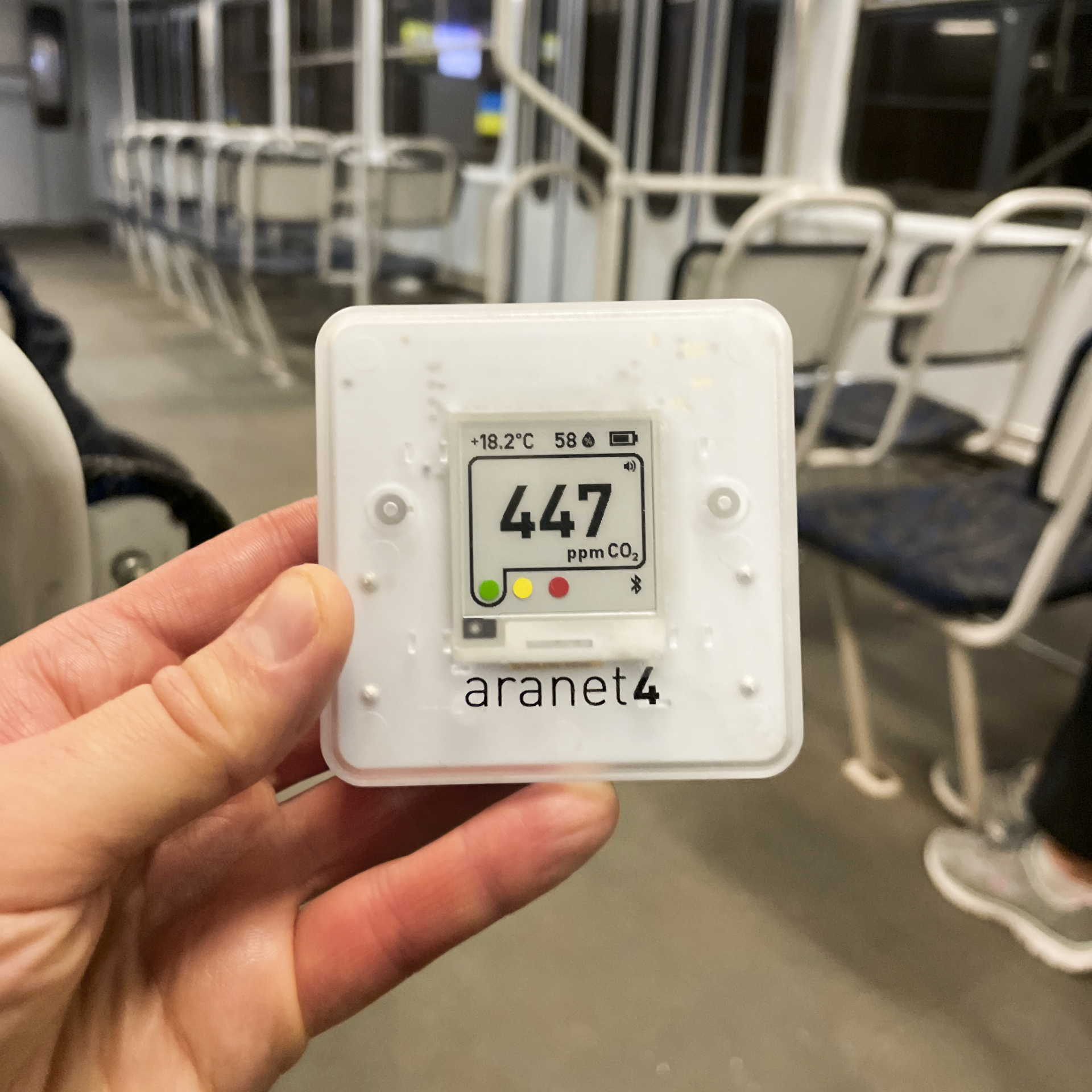Ever wondered what the air quality is at the public spaces you visit? Perhaps you’re wondering which spaces are more likely to have been the sources of contamination? We don’t have precise answers, but we have been wondering about the same and carrying our Aranet4 with us around Riga, Latvia.
Wide variations in cafes, bars, and restaurants
When it comes to eating out, a lot seems to depend on how packed the space is, the size of the premises, and the ventilation system. You know that cozy restaurant with dim lighting and candles on each table where people go with their loved ones? We went to one like that on a crowded Thursday night. As more people entered the premises, you could feel the place warming up and, unfortunately, the air getting stuffier by the minute. When it got noticeably uncomfortable, turned out the Aranet4 had gone up to 5493 ppm! Very different from this was the bar experience – the stylish industrial space had high ceilings, it wasn’t as packed, and the air quality stayed below 1000 ppm.
Medical facilities
The public medical facilities we went to didn’t seem to have a ventilation system in place. Only a few people were around on a workday evening (5 PM), but the CO2 level in this public hospital was 1096 ppm which is above the recommended level. When it comes to private medical facilities, the air quality was better – only a bit over 500 ppm.
Public transport
No surprises here. We did not expect good results on public transport, and we did not get them. The CO2 rose to about 2500 ppm on a mildly full train. What’s interesting is that there are signs on windows not to close them during the ventilation, but all the windows mostly stay closed. With the cold season here, not many seem to care about fresh air more than the temperature in the train cars.*

The situation was a little better on a fully packed bus where the CO2 level reached 1506 ppm. Considering the amount of people occupying the vehicle, the ventilation seemed better than in the train ride.

Whereas the almost empty tram car provided air almost as fresh as the outside. This ride was taken quite late in the evening at 9 PM, when the traffic is light and the ride from one stop to the next takes very little time. With all the doors automatically opening every few minutes and not many people around, the air exchange was superb.

*A few days after the train ride, our colleague started feeling ill. Although we can’t say with certainty that the train ride was where she caught the virus, it was the only public space visited at that time period. Taking in mind how the air quality was poor and the distance between people quite small, our colleague suspects this might be the source of infection.
Amusement Park
A positive surprise on a Wednesday evening birthday party celebrations at a large amusement park. With the CO2 levels staying mostly around 500 ppm and never exceeding the 852 ppm reading visible below. Easy to have a good time when the air is fresh and breezy!

Gym
The air quality seemed good enough while exercising in the stretching area of an empty gym. The CO2 level of 852 with only one person occupying the space for mild exercising left us wondering about what the air quality in the space might be like when there’s more people around. If there were no added ventilation in those circumstances, the air quality might quickly deteriorate quite a lot.

As we expected, the air quality varies greatly in different places. Depending on the ventilation system (or the lack of it), occupancy, the size of the space, and other factors, the CO2 readings varied from good to shockingly high. Measuring the air quality allowed us to make decisions to act accordingly when possible.
Have you tried measuring air quality in public spaces? If you want to raise awareness about the importance of air quality, share this article and add your own measurements or observations.



